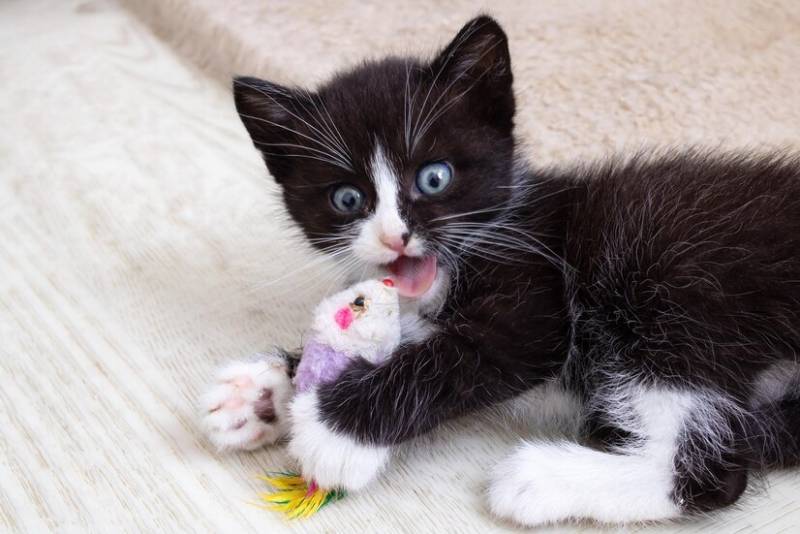How to Tell if a Cat Is Neutered: 8 Vet-Reviewed Signs to Look for
Updated on
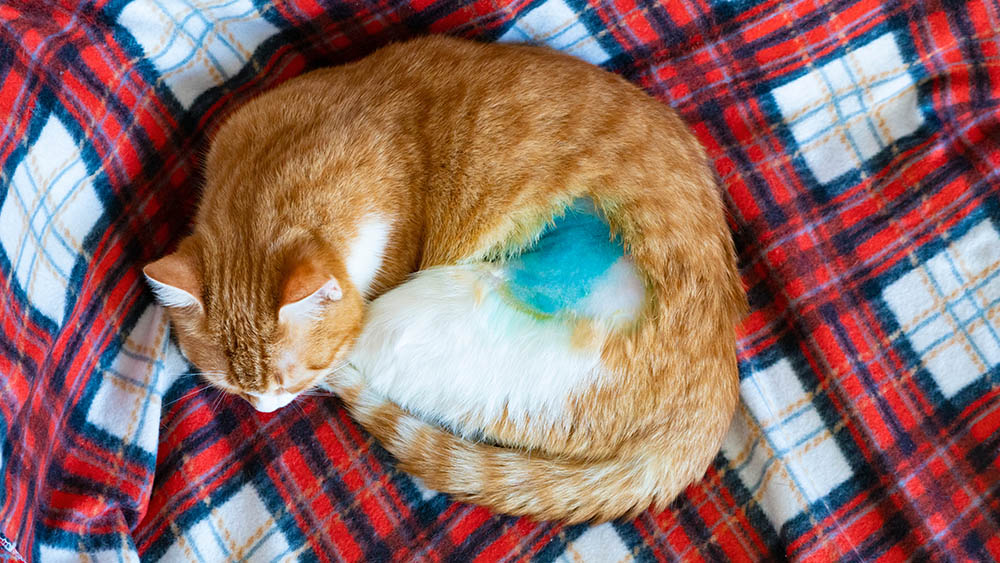
Click to Skip Ahead
The ASPCA has an average of 6.3 million animals brought into their U.S. shelters every year 1 . Of these, about 920,000 are euthanized, and that is 920,000 too many animals being put to sleep. These numbers clearly demonstrate the importance of spaying and neutering our cats, regardless if they are male or female.
Here, we’ll go over the physical signs and behavioral changes that a male cat goes through after being neutered.
Before We Begin
First, you can always bring the cat to a vet, who will be able to tell you if the cat is neutered in short order. This is definitely a more reliable method, but it’s one that you might not have the time or the funds for.
So, to check a cat yourself, you should probably wear gloves (preferably latex), particularly if you don’t know the cat or he’s a stray because you’ll be prodding at the genitals.
Here are the physical ways that you can tell, by looking or touching, if a male cat has been neutered or not.
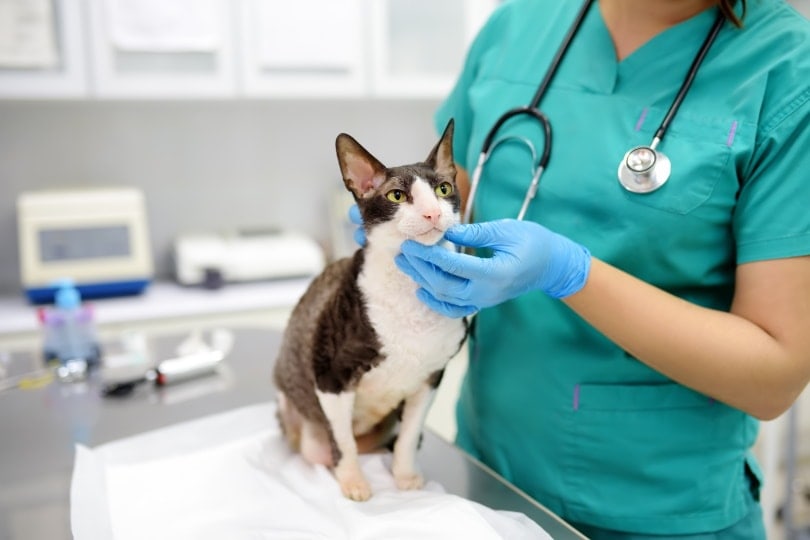
Physical Signs
1. Check the Scrotum
This will only work if you actually have the cat close by and he doesn’t mind being handled by you.
Male cats have their testes just below their anus. When neutering a male cat, the testicles are removed, but the small pouch of skin does remain. However, after being neutered, the scrotum is considerably smaller and will feel empty. If it feels as though there are two small, firm balls inside the sac, the cat is still intact.
You can sometimes tell from a distance based on the size and apparent firmness of the scrotum. You can check pictures online as a guideline and reference.
Keep in mind that this isn’t always an accurate method, as sometimes, cats can have cryptorchidism, where the testicles don’t actually descend into the scrotum. It also means getting up close and personal with a cat that is perhaps new to you, which might not necessarily go well.
2. Check the Ears
Some colonies of stray cats might have a small notch or the tip of one of their ears cut off, which signifies that they have been fixed.
However, bear in mind that some cats might have nicks in their ears from fighting other cats. Also, this method only works if the cat in question has been a feral or stray.
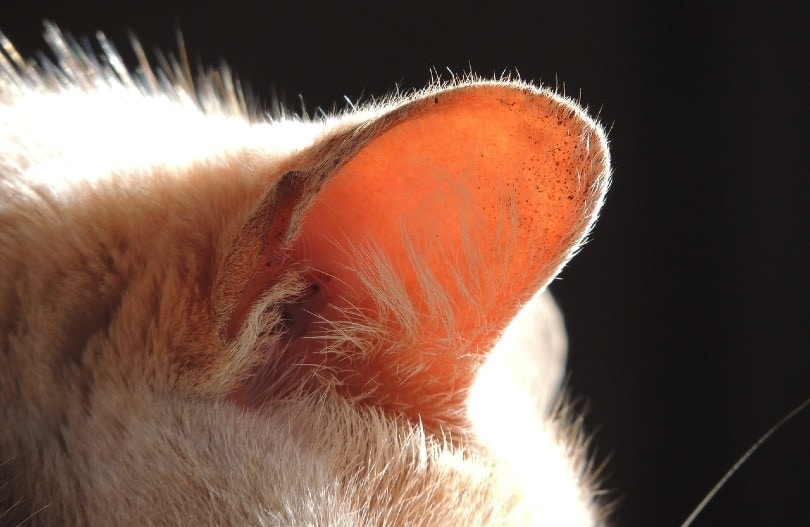
3. Check the Abdomen or Near the Scrotum for a Tattoo
Most cats that have been altered will typically have a green tattoo that indicates the cat has been fixed. This tattoo may be located on the skin near the scrotum or on the belly.
4. Facial Structure
This can be a little harder to tell, and it isn’t the most accurate method. Unneutered male cats develop something called stud jowls, also known as shields. This means tomcats have thicker “padding” on the sides of their faces, which acts to protect them during fights with other toms.
These stud jowls develop due to high testosterone levels, so when they are neutered and the testosterone goes down, so do the jowls.

Behavioral Signs
5. Strong Urine Smell
Male cats that are unneutered tend to take on marking behavior by spraying surfaces with their urine. The urine is also quite strong smelling, which will get less potent once a male cat has been fixed.
Less testosterone also means the cat will stop spraying to mark territory.
6. Aggression
Unneutered cats tend to be much more aggressive toward other unneutered male cats. It’s all about territory and unspayed female cats. They frequently get into fights with other cats and can come home with bite abscesses. The aggressive behavior will usually lessen after neutering.
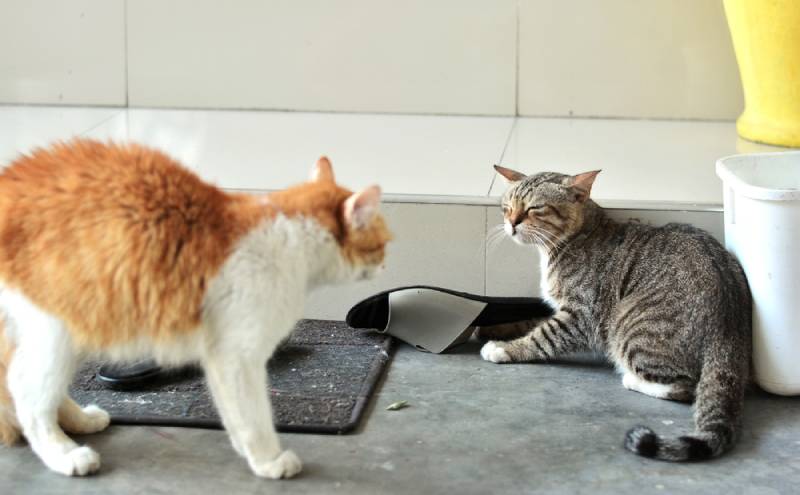
7. Wandering
Tomcats are known for their wandering behavior. They can roam around and disappear for days at a time, and sometimes might not ever come home. They are more likely to become injured through fights, get hit by cars, and contract serious diseases. When they are neutered, most of the wandering behavior will improve.
8. Vocalization
Tomcats enjoy a good yowling session. Unneutered cats do a great deal of caterwauling as a way to draw female cats to them and warn off other males. Neutering the cat should also lessen this kind of behavior. This doesn’t mean that neutered males don’t meow and vocalize, but there is a difference in the intensity.

Why Should You Neuter Your Cat?
Most of these signs and behaviors — aggressive behavior, caterwauling, roaming, urine marking — should be reason enough to neuter your cat. A neutered male cat will also be more affectionate and stay closer to home (or can better handle being an indoor cat).
Out of the 6.3 million animals that show up at ASPCA shelters, 3.2 million of them are cats. Out of the 920,000 animals that are euthanized, 530,000 of these are cats. In 2020, the ASPCA spayed and neutered 47,000 animals.
There are also the possible diseases that your cat might pick up on his travels, such as feline immunodeficiency virus and feline leukemia virus.
Ultimately, neutering your cat will not contribute to more homeless cats and infectious diseases, and you’ll end up with a healthier and friendlier cat overall.
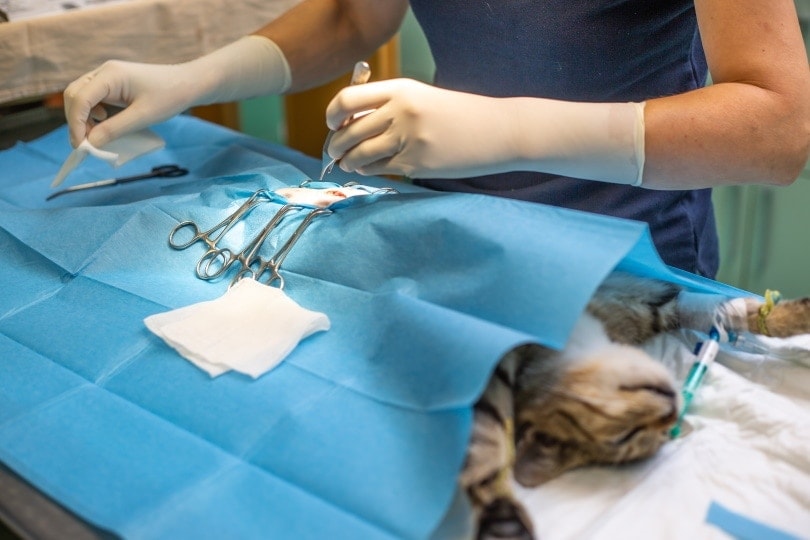
Conclusion
It is possible for you to feel or look for physical signs that a cat has been neutered. How you find out does depend on the cat and your relationship with him. You can sometimes tell from a distance by their ears or by how they’re acting. If their urine is super stinky, you know that you’re dealing with an intact cat.
You can also just bring the cat to a vet, and then you’ll know beyond a shadow of a doubt. Ensuring that a cat is neutered is essential..
Featured Image Credit: ozanuysal, Shutterstock




